1.1: Pallet
All Information on Pallet Delivery
1. Pallets and loading
2. Transportation packaging for pallet delivery
3. Declaring of pallet deliveries
4. Pallet exchange
5. Notification
6. Delivery
7. Loss of packages during transportation
All Information on Pallet Delivery
1. Pallets and loading
The tunnel height and width of a disposable pallet, and the spacing between tunnels, must conform to those of an EUR flat pallet (see Annex A2).
Pallets should only be delivered stacked in exceptional cases, for the purpose of optimizing transport space. Stacked pallets should not be wrapped fully in film, in order to ensure that the top pallet can be unloaded safely.
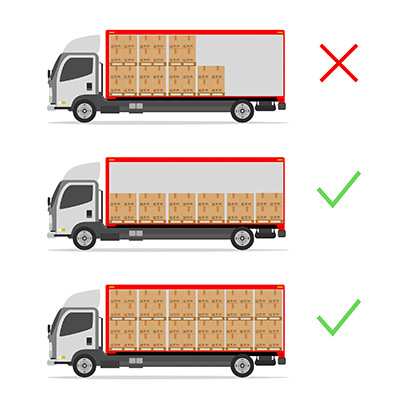
Please note that the pallets must be labeled on the short side and must face towards the back of the vehicle in order to ensure quick unloading (delivery note/shipping label, etc. can be recognized quickly). In addition, the pallets must be delivered with a vehicle that can drive backwards up to an unloading ramp and offers access to the back of the vehicle using an electrical pallet truck. It should be at least a 7.5 ton vehicle with a reinforced floor.
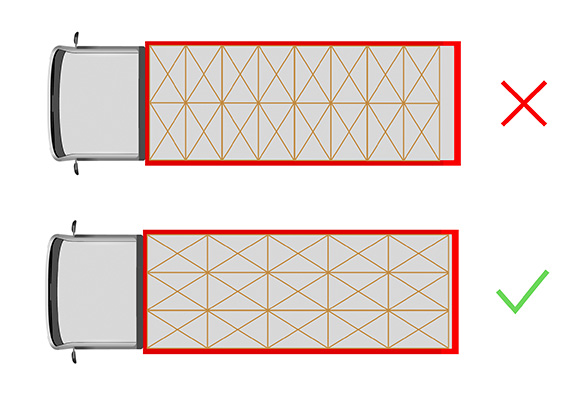
- The tunnel dimensions of a disposable pallet are the same as those of a EUR flat pallet
- Do not fully cover stacked pallets in film
- Short side of the pallet faces the back of the vehicle
2. Transportation packaging for pallet delivery
All shipments must be packaged in such a way that they are safe during transport and protected against access. Pallet shipments must be wrapped, strapped down, or sealed. The film must fit closely against the goods, but may not damage them.
The film should be wrapped around the wood of the pallet connected to the goods to secure the load. This prevents the goods from slipping off of the pallet during transportation. It must always be possible to insert a manual pallet truck into the tunnel of a wrapped pallet. The ends of the film must be on the short side of the pallet.
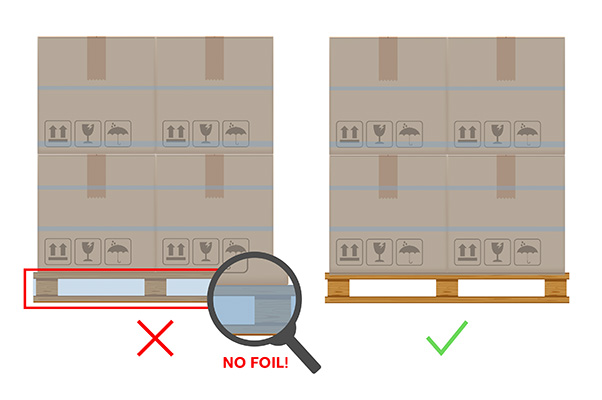
Loose parts or products must be packaged in outer packaging. Package shipments that include more than 30 loose packages must be palletized. The pallets may not exceed the dimensions of a Euro pallet according to the CCG1 Standard (L: 1.20m x W: 0.80m x H: max. 1.05m incl. pallet) and CCG2 Standard (L: 1.20m x W: 0.80m x H: max. 1.95m incl. pallet). Avoid anything protruding or extending beyond these dimensions.
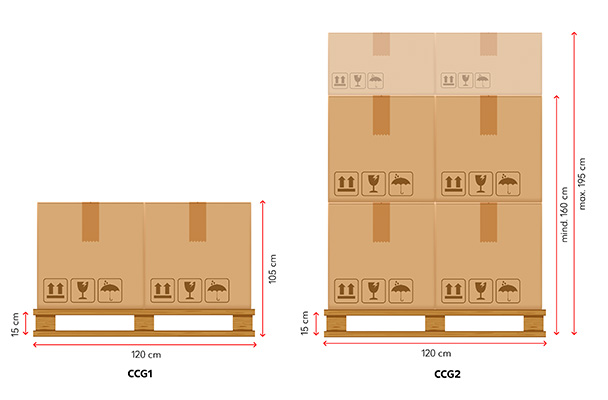
Bulges or lopsided loads must be excluded through effective transport securing equipment. Plastic straps may be used to wrap around the pallet to secure the load. Appropriate edge protection must be used on the packages in this case.
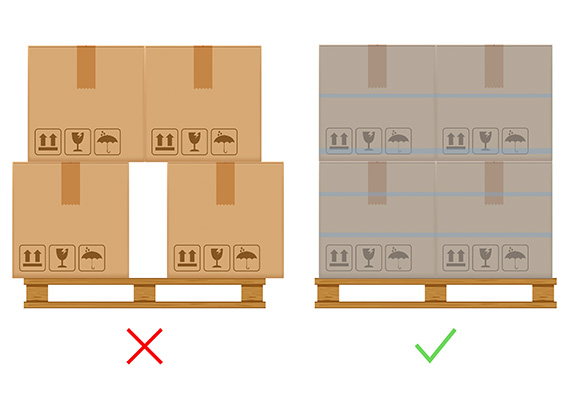
The maximum weight of a pallet incl. load may not exceed 750 kg. Pallets that do not conform to at least quality class C in accordance with the EPAL definition (see section 2.2.4) can be rejected, at the cost of the supplier.
- The pallet height may not exceed 1.95 m (or 2.4 m if pallets are stacked to optimize transportation space). Stacked pallets must be transported in such a way that they are secure for unloading. Otherwise, acceptance may be denied in incoming goods, for the safety of our employees.
- Damage in transit resulting from insufficient packaging or securing of packages shall be borne by the distributor.
Warning!
1. Whenever possible, pallets should contain only one kind of goods. Pallets containing mixed goods are permitted only if the maximum possible number of pallets containing only one type of goods have been loaded.
2. A mixed pallet may contain a maximum of four different products.
3. The limit to four different products may be exceeded slightly if there are only a few of each product, and if stacking pallets in this case would cause the stacks to be uneven and unstable.
4. Please note that failure to observe the above requirements for pallet deliveries may result in additional fees or delay the goods receiving process.
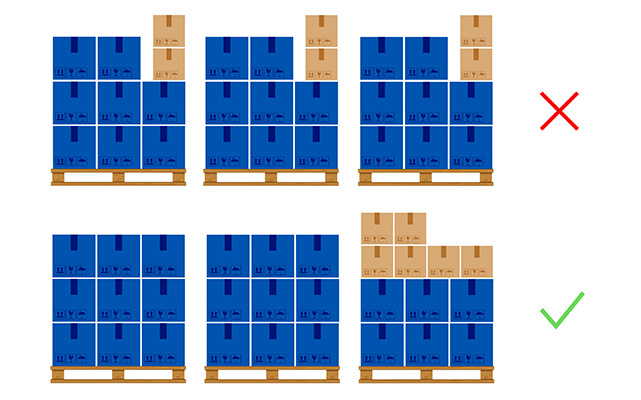

- Package goods to protect them against access
- Wrap, seal, or strap pallets → Connect goods to the pallet
- Keep pallet tunnel free from film
- Do not exceed Euro pallet dimensions
- Avoid bulges / protrusions
- Use transport securing equipment and edge protection as needed
- Pallet height max. 1.95 m (double pallets >=2.40 m); weight/PAL max. 750 kg
- Use at least C quality pallets
- Pallets should contain only one product
3. Declaring of pallet deliveries
All information must be placed on one of the short sides of the pallet.
The delivered goods must be clearly identifiable, and it must be clear that the pallet is intended for the FBK warehouse. A shipping label with information on the sender and recipient should be attached to every pallet.
If the shipment consists of multiple pallets, each pallet must be labeled accordingly (e.g. pallet 1 of 10 or 1/10).

Pallets that look similar from the outside, but that contain different goods (such as different product colors) must be marked with the label "!" or “Different GTINs.” This label must be at least size DIN A4.

The link below will lead you to a template which can be used as a shipment label for pallet delivery. Complete the fields with your shipping information and print the document in DIN A4 format, then attach it to the corresponding pallets.
Each shipment requires a delivery note. The document must be clearly visible on the first pallet (pallet 1/... ) of the delivery. For this purpose, please use a shipping bag or attach the delivery note to the first pallet in such a way that it is protected from dirt and can be easily removed by hand.
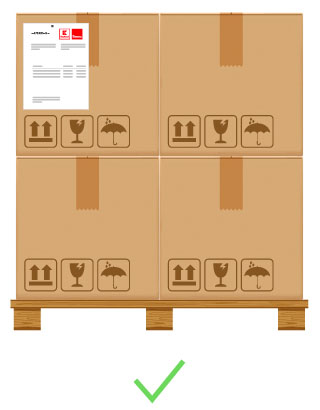
Labels for deliveries of mixed goods:
- Mark the pallet with the label “MIX” (printable template here). This label must be at least size DIN A4.
- List of the contents of the mixed pallet (product designation, GTIN)
- For the label on the outer packaging (with loose parts), the contents must either be identifiable using an additional list (product designation, GTIN, shipment ID) for each product and product quantity in the outer packaging), or in the contents list for the mixed pallet.
- If SUs or PUs with different GTINs are packaged in outer packaging for easier transport (such as USB sticks with different storage capacities or of different colors), the “MIX” sticker must be applied on all six sides of the outer packaging. This sticker is available for you to download at the following link.
Apply information to the short side of the pallet
- Use a shipping label with the sender and recipient's addresses
- Delivery note wrapped on pallet 1/... or packed in delivery note pocket
- For shipments with more than one pallet: Number each pallet
- Label visually similar pallets/mixed goods in DIN A4 size
4. Pallet exchange
In general, Euro pool pallets (only marked with the “EUR”/”EPAL” stamp) are exchanged one to one. The FBK warehouse reserves the right to not exchange pallets that do not meet at least quality class C according to the EPAL (https://www.epal-pallets.org/eu-de/qualitaetsklassifizierung). Euro pool pallets or other load handling equipment (such as disposable pallets, wooden frames or crates) that cannot be exchanged shall become the property of the company. There shall be no claim to monetary compensation. This will be noted on the accompanying documents, and must be signed by the freight forwarder. No pallet vouchers will be issued. If the freight forwarder expressly does not want to exchange the pallets, any subsequent request for compensation will be strictly denied.
A pallet cannot be exchanged if:
- A component is missing, broken, or twisted
- A prohibited component is installed (e.g. undersized, rotten, rough edge)
- Fastening elements (such as nails) are visible
- Contamination is present that could be transferred to the loaded goods (such as paint, oil, odor, mold, etc.)
- An unapproved repair was completed
- No specified label is legible
- A board is missing or has broken out at the ends
- A transverse board is missing or has broken out at the ends
- Pallet nails are sticking out
- A board is missing or broken through the middle
- The lower center board is broken off over the entire length
- A board broken off across or through the corners
- The boards are soaked with water
- The overall condition is so poor that the load-bearing capacity is no longer ensured
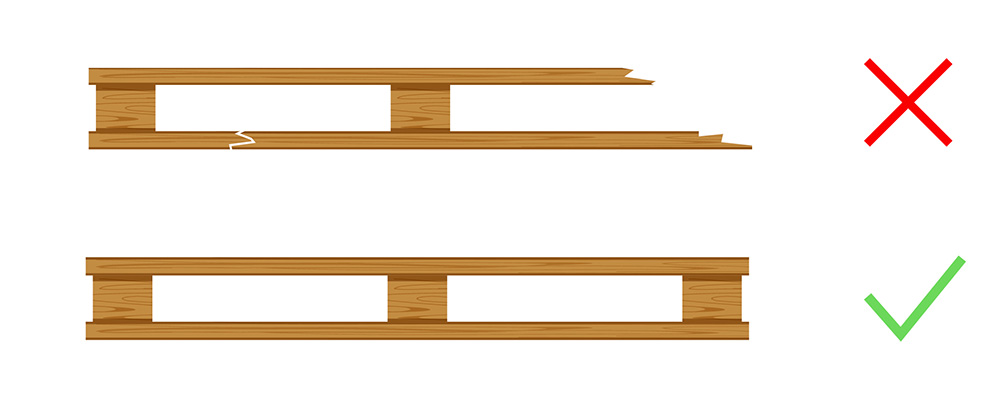
- Only 1:1 exchange of Euro pool pallets/ min. C class according to EPAL
- Load handling equipment which cannot be exchanged or other load handling equipment (such as disposable pallets, wooden crates) will become the property of the company.
5. Notification
The warehouse must be notified of each container and pallet delivery, including the data relevant for the shipment (shipment ID, number of pallets, delivery note, sender company name). Notifications can be made only by booking in the time window booking portal DC Transport Planner (https://schwarz.dctransportplanner.com).
Distributors that deliver their goods via a separately organized shipment by a service provider must inform the service provider to send this notification to the warehouse. All information on the delivery entered into the notification tool must match the physical goods delivery to the FBK warehouse. Based on past experiences, having another party besides the delivering company book the time window can cause problems. You are welcome to forward this Notification section to transportation companies, using this print version.
In general, time windows must be booked at least 48 hours, and at most two weeks in advance. Detailed instructions for booking time windows are available for download at this “Link.”

Notifications that are not made, that are incomplete or incorrect, or late deliveries will result in cancellation of the scheduled collection into warehouse processes. In such cases, acceptance of the deliveries may be denied. These cases include:
- Double bookings for identical deliveries
- Booking in the wrong delivery area
- Entering the wrong pallet quantity
- Bookings with incorrect or incomplete order numbers
- Deliveries received over 15 minutes after the end of the time window
Shipments for which no notification is sent will be accepted and unloaded based on available incoming goods capacity. The company will not accept any demurrage fees for resulting wait times.
The company will not issue any documents that could be necessary for border crossing.
If needed, a fixed time window can be agreed for goods acceptance for suppliers who make frequent deliveries (over two deliveries weekly). Please contact your Kaufland e-commerce contact person for this purpose.
To ensure on-time unloading, take any wait times for border crossing into account in route planning for international shipments.
If late deliveries cause delays, the supplier may be charged any costs (for wait time/late/early delivery of goods). In the event of delays or other problems, a contact person is available to the transporting company (freight forwarder) at zfm@kaufland-ecommerce.com.
Unapproved or unlisted goods will be rejected, and must be removed promptly by the supplier. If problems are noted later on for goods accepted on a conditional basis, the supplier will be contacted by FBK customer service. The distributor must pick up the goods in question within 5 business days. If the distributor does not fulfill a request to do so, the goods will be disposed of at the distributor's cost.
- Notification principles must be provided to the transportation company.
- The delivering company should book time windows, not the sender.
- Notifications may only be submitted via https://schwarz.dctransportplanner.com
- Delivery can be denied, for instance in case of:
- Incorrect information in the booking (such as delivery area, number of pallets, order number)
- Duplicate bookings
- Late deliveries
- No booking made
- Unapproved or unlisted goods
6. Delivery
Deliveries may be made between 6:30 AM and 2:00 PM (CET).
A delivery may contain only products that can be classified under a single shipment ID.
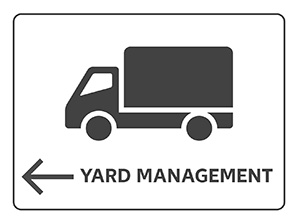
The freight forwarder must report to the incoming goods office in a timely fashion with all relevant papers on the date of delivery. They will be assigned an unloading gate after these are reviewed. Unloading will be handled by incoming goods employees (the freight forwarder does not have to be present).
In general, goods are accepted on a conditional basis. No direct detailed control will be carried out, and the note “subsequent detailed control” will be entered on the delivery note. Only the number of delivered containers (such as pallets, boxes) is acknowledged, as well as that the shipment packaging appears to be undamaged on the outside. Acknowledgment of conditional goods acceptance by the FBK warehouse does not obligated the warehouse to complete an immediate detailed control, including a complete inspection and review of the shipment.

Warning!
If damage is visible from the outside, this will be noted on the delivery note, which must be counter-signed by the freight company (driver). Goods acceptance can also be denied depending on the extent of the damage. The denial of acceptance must also be acknowledged.
The sender will be notified of damage not visible from the outside (hidden defects) following an inspection in the warehouse.
The distributor will be notified if the delivery is above or below the expected quantity in the “Detailed control” area of the FBK portal. No proactive notification will be provided by the Fulfilment Center.
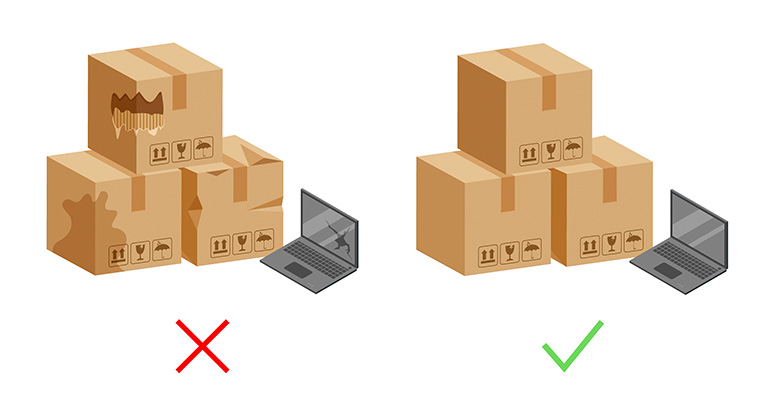
- FBK warehouse business hours 6:30 - 2:00 PM
- 1 delivery = 1 shipment
- Detailed control and notification of any defects will be completed subsequently
- Incorrect quantities are indicated in the FBK portal
7. Loss of packages during transportation
To better track the delivery status of a shipment, we recommend you save the tracking numbers of all pallets/packages. Each tracking number should also be entered in the Seller Portal with the shipment it is a part of.
We do not record tracking numbers in our receiving process. We are able to confirm which package number (information on the FBK barcode label) has been delivered on request. In order to identify undelivered packages, the sender must be able to match the tracking number with the package number. This is done outside of the Seller Portal (e.g. in Excel, WMS).
We will only conduct individual checks of goods received at the seller’s request if shipment tracking indicates that all pallets/packages in a shipment were successfully delivered to the FBK warehouse. Before submitting an enquiry, the seller must confirm the proof of delivery from the transportation service provider.
It is the seller’s responsibility to clarify the whereabouts of any pallets/packages that were not delivered with the shipping company. This is not the recipient’s responsibility.
Summary
- Keep track of your tracking numbers and enter them in the Seller Portal
- Assign package numbers (1/10) to each tracking number
- Only submit individual checks to Seller Support if you have verification from the shipping service provider that all pallets/packages were successfully delivered
- Seller is responsible for determining whereabouts of any missing pallets/packages



























